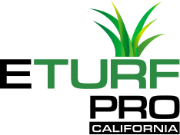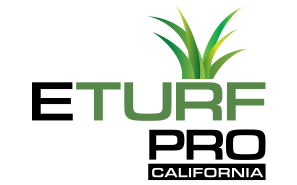The Dos and Don’ts of Maintaining Artificial Turf
Artificial turf is incredibly durable. Unlike real grass which loses its appeal rapidly during summer or after heavy rainfall, artificial turf survives perilous scenarios. However, this doesn’t mean that it is indestructible. If you want to keep your artificial turf in its pristine condition for as long as possible, here is a list of things we recommend you should and shouldn’t do with your artificial turf to support its longevity.
The “DO” List
Brush the Blades Against Pile Direction
While the pile in artificial turf gives it a natural look, it can flatten out in high-traffic areas or under heavy objects like garden furniture. As a result, frequently brush or broom your artificial grass to keep the blades upright.
As with the rake, select a synthetic grass brush with artificial bristles instead of wire and metal brooms, which could damage your turf’s fibers. Rubber brushes also come in handy, but if you want to save energy and time, consider investing in a leaf blower or power brush.
Remove Pet Waste Immediately
Do not let pet waste accumulate on your artificial turf. Remove the waste immediately, and hose down the affected part to eliminate any leftovers. To remove any lingering odor, use water and soap solution.
Cover Your Artificial Turf When Painting
When painting, paint splatters often splash within a 10-meter radius around the garden chair or fence. These stains may make your artificial turf appear extra cheerful, but we bet it won’t be fun once you realize the stains are permanent.
Try to minimize the mess- or even safer, cover your artificial grass with a towel or huge plastic sheet. If daring drips still find their way onto your turf, clean them off immediately before they dry.
Keep It Away from Fire or Hot Objects
A fire pit or grilling area is an excellent addition to any garden. But it isn’t a good idea to put either of these sizzling objects near your artificial turf. Hot ashes and embers may fall on it, causing the plastic fibers and threads to melt.
Place your fire pit or barbecue far enough away and on a solid surface like your terrace or patio to prevent damaging your turf. In addition, avoid smoking near your artificial turf as hot ashes from the cigarette may fall on the grass causing it to melt.
Rinse Your Turf Occasionally
While synthetic turf doesn’t need to be watered like natural lawns, this doesn’t mean it won’t benefit from occasional watering. A quick hose spray can help eliminate pollens or pollutants accumulated on the turf’s blades. Since artificial turfs are made to facilitate excellent drainage, you don’t have to be concerned that your artificial turf will become soaked after rinsing it.
Have the Right Equipment to Maintain Your Grass
Having the right tools simplifies things and keeps your synthetic turf clean and tidy. Some of the crucial tools include a rake, a leaf blower, and a hose.
The “Don’t” List
Do Not Use a Stiff-Bristled Brush or Metal Rake on Your Artificial Turf
Under no circumstances should you use a stiff-bristled or metal rake on your synthetic turf, as this can cause lasting damage. A damaged artificial grass demands retouching exercise, which can be expensive.
Do Not Drag or Push Tables and Chairs Over the Grass
Artificial grass is extremely durable and can withstand moderate traffic. Still, pushing or dragging furniture over it isn’t advisable as this will only cut off the grass blades and ruin its appearance.
Do Not Use Corrosive Chemicals Near Your Lawn
Make sure to keep corrosive chemicals away from your synthetic grass, such as harsh cleaners, as they will cause irreversible damage over time.
These chemicals can be released when organic materials like dead bugs, leaves, and animal feces decompose. Make sure to get rid of all organic materials from your artificial turf.
Do Not Let Weeds Take Charge of Your Lawn
Animals like insects and birds may scatter weed seeds on your artificial turf, allowing plants the chance to take over your lawn. Always keep an eye out for them whenever you perform maintenance tasks. As soon as you spot them, remove them.
Do Not Use a Pressure Washer
Although pressure washing your lawn may seem like an easy approach to cleaning it, it can damage your turf’s infill material and fibers. It could move or entirely remove the infill in your artificial turf. This can cause your turf to wrinkle or have drainage issues. To refill your turf, you may have to buy an extra infill.
Also, if the turf is not well secured around the edges, you risk accidentally damaging it with pressure and eventually loosening the grass tuffs.
We recommend using a leaf blower instead of pressure washers to remove debris and dirt from the artificial grass.
Do Not Park Your Vehicle Over Synthetic Grass
When cars drive back and forth on artificial turf, they leave tire marks on the grass because of their traction and weight. Altering tire directions on the turf will rip the grass blades off the turf, resulting in permanent damage. Fuel and oil leaks may also taint the synthetic grass permanently.
Do Not Overwater the Grass
Artificial grass doesn’t need as much water as real grass, but It still has to be watered rarely to keep the infill material from getting compacted. If you overwater the turf, the infill material can become flooded, leading to the growth of mold and mildew. Ensure to adhere to the manufacturer’s guidelines for watering your artificial grass and refrain from overwatering.
Conclusion
As you’ve seen, maintaining artificial grass is easy when you know what to do and what not to do. Adhering to every point mentioned in this post can extend your turf’s usability and longevity for years.


